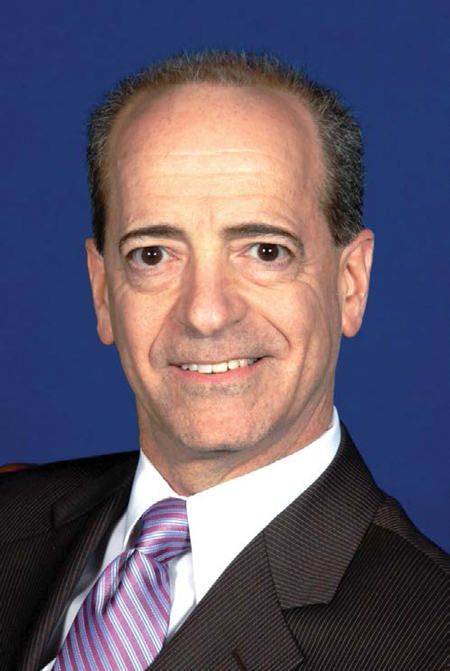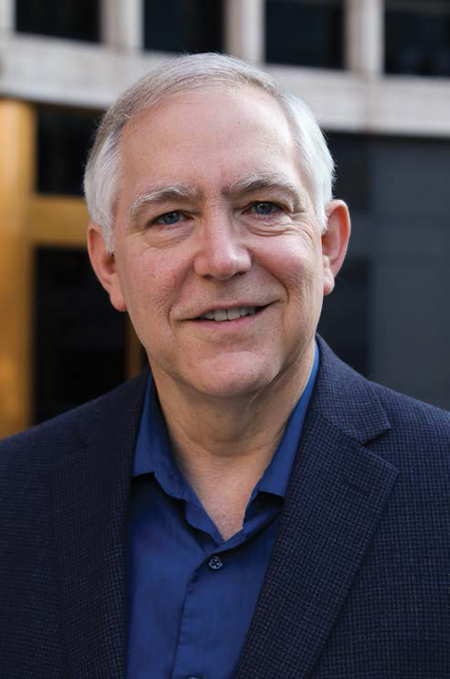Broadcast Engineering Conference Embraces IT
Information technology is fundamentally changing how broadcast engineers do their jobs. In fact, IT is redefining the very meaning, nature and infrastructure of broadcasting itself.
This fact explains why the National Association of Broadcasters is embracing IT education at the 2017 NAB Show, at the Las Vegas Convention Center April 22-27. This embrace is reflected in the annual Broadcast Engineering Conference (BEC) being renamed the “Broadcast Engineering and Information Technology Conference” (BEITC), since IT-themed topics are driving many of the 2017 event’s educational sessions.


Skip PizziLynn Claudy
“The name change is really just formalizing what has been happening to the job description of the broadcast engineer over the past several years,” said Lynn D. Claudy, senior vice president of technology for NAB. “Pretty much every broadcast system has a strong IT component now. So in renaming the conference to the Broadcast Engineering and Information Technology Conference, it’s the word ‘and’ that is the most important; connecting the historical core expertise in broadcast engineering with the newer imperative of IT competence.”
“Although our conference programming has reflected a multidisciplinary broadcast/IT approach for some time, we felt it made sense to attest to this in the actual name of the conference going forward,” added Skip Pizzi, vice president of technology education and outreach for NAB. Pizzi is coordinating the technical education and showcase programs at the 2017 NAB Show. They include the BEITC, Global TV Tech Day, technical SuperSessions and the Futures Park powered by PILOT, NAB’s technology incubator program.
ELECTRONIC POSTER
The tightening interplay between broadcast engineering and information technology is certainly reflected in the 2017 BEITC’s topic lineup. This is in line with the convergence between broadcasting and IT that is occurring in the real world.

Hundreds of broadcast engineers from around the world descend on the Las Vegas Convention Center for the annual conference.
The professional video industry's #1 source for news, trends and product and tech information. Sign up below.
“As broadcasters move into streaming, over-the-top offerings, social media sites and other IP delivery platforms, we need to adapt our representation efforts to address those new business models as well as the traditional broadcast spectrum-based distribution path,” said Claudy. “We’ve definitely expanded our view of what it means to be a broadcaster.”
With 173 sessions to choose from, the 2017 BEITC has something for everyone. So what’s hot? “If I had to pick some top 2017 BEITC themes, I’d say next-gen TV—including ATSC 3.0 and Ultra HD—along with conversion to IP workflows, and cybersecurity,” said Pizzi. “Also of high interest on this year’s program are advanced newsgathering technologies, OTT, and evolving broadcast facility design.” (The full lineup of the 2017 BEITC’s session lineup can be found by logging onto www.nabshow.com and entering ‘Broadcast Engineering and Information Technology’ in the search engine.)
A new presentation delivery style for 2017 is the addition of “electronic poster” sessions called BEIT ENGAGE! on Saturday, April 22, according to Pizzi. There are three BEIT ENGAGE! sessions scheduled that day on the respective subjects of IP for broadcast, emerging broadcast delivery systems, and media facilities design. Each of these 90-minute BEIT ENGAGE! sessions will feature several simultaneous presentation stations distributed around the meeting room, at which attendees can informally interact with the presenters.
“Think of the BEIT ENGAGE! sessions as being like conventional roundtable sessions, but with people discussing a topic around a PowerPoint screen rather than seated at a table,” Pizzi said. “We think it will be a fun, dynamic and interactive way for attendees to exchange information on important topics.”
EMERGING TRENDS
As always, the educational goals of the annual BEITC are highly ambitious. But they have to be if the NAB is to provide its broadcast engineer attendees with the fast-track, high-level knowledge they require to stay abreast of new and emerging technology.
“Next-gen TV is upon us, and over the next few years our services and the facilities in which they are produced and delivered will change to accommodate it,” said Pizzi. “Part of that transition will include Ultra HD video, immersive and personalizable audio, and new levels of audience interaction—all on an increasingly IP-based core.”
“Security of these facilities has also never been more important,” he continued. “A new regulatory environment for TV services in the U.S. may also be emerging, along with the already burgeoning marketplace of new competitors. The 2017 BEITC will address all of these topics, presented by the world’s top experts, in a single conference like no other.”
It seems fair to say that the 2017 BEITC is the most far-ranging, content-rich broadcast engineering conference ever offered by the NAB.
For his part, Pizzi prefers to state the BEITC’s goals in modest terms. “We’d like every BEITC attendee to leave Las Vegas knowing more than they did when they arrived, hopefully in numerous areas,” he said. “We also hope those BEITC attendees who are affected by the repack will come away a bit better prepared for it.”
To help lock in this knowledge, or for access to papers that attendees might miss when presented during the 2017 BEITC, proceedings will be made available on a USB drive offered at the convention in the NAB Store, and afterwards at www.nabstore.com.
Taking a ‘big picture’ view, “we hope BEITC attendees leave Las Vegas with some expanded knowledge, and an expanded network of contacts and information resources,” said Lynn Claudy. “We also hope they internalize an expanded appreciation for the value of in-person meetings with colleagues and friends. You shouldn’t live life just on the internet.”
For more information on the conference, visit the BEITC homepage.
James Careless is an award-winning journalist who has written for TV Technology since the 1990s. He has covered HDTV from the days of the six competing HDTV formats that led to the 1993 Grand Alliance, and onwards through ATSC 3.0 and OTT. He also writes for Radio World, along with other publications in aerospace, defense, public safety, streaming media, plus the amusement park industry for something different.

